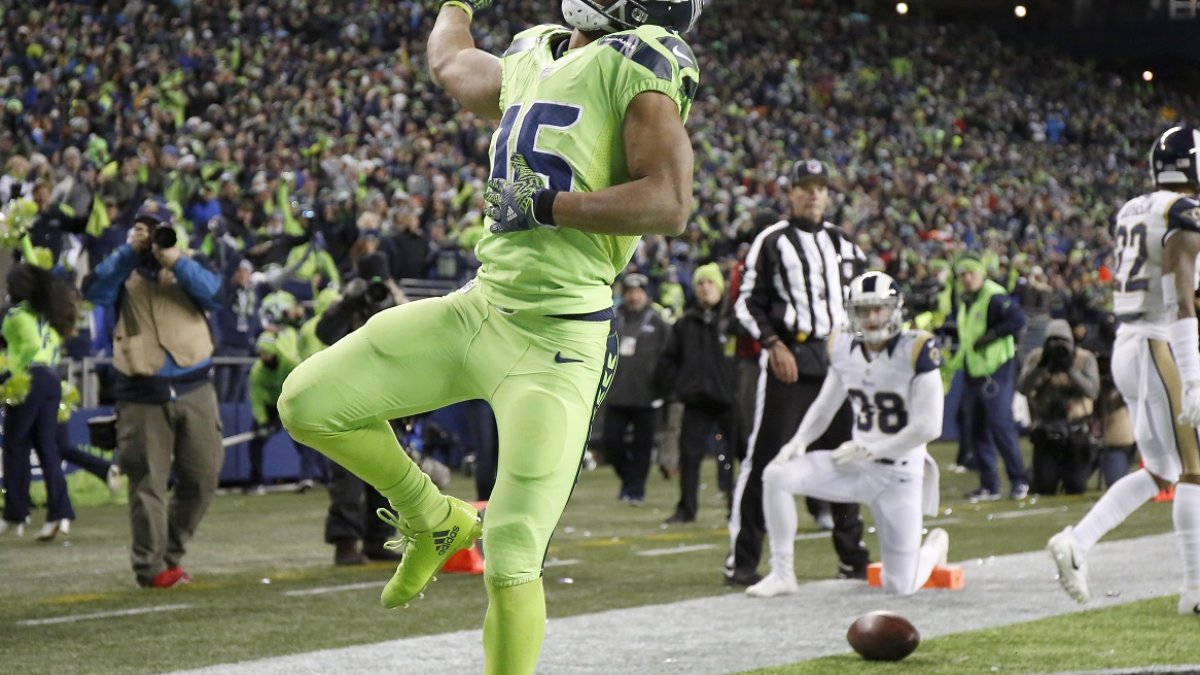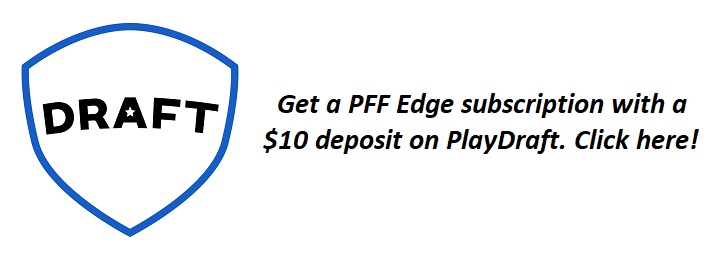I’m a fantasy football addict. I love writing and podcasting about fantasy football, but more than anything – I love drafting teams. Over the past three years, I earnestly cannot remember a single summer day where I wasn’t involved in at least one fantasy football draft.
This may sound extreme, but the large bulk of these are in low-maintenance best-ball leagues. In a best-ball league, you have the option of playing in a fast draft (30-second pick clock) or slow draft (eight-hour pick clock). The latter drafts typically take several days or up to a week to complete. One of the added benefits of these leagues is that there are no frustrating start/sit decisions to make during the season, nor are there time-consuming add/drops or trades.
Between 2014 and 2015, I’ve competed in roughly 250 best-ball leagues and have been profitable in each season. In honor of DRAFT’s new best-ball offering, I wanted to highlight the three most important tips I’d give to beginners.
In DRAFT’s format, you’re drafting for 18 rounds and you’re starting 1QB, 2RB, 3WR, 1 TE, and 1 Flex (RB/WR/TE) each week. Your highest-scoring players (0.5 PPR) at each position are automatically put into your starting lineup each week.
Tip #1
I’m a big advocate of trying to select the best player overall and trying to let the draft fall to me in the early rounds of most drafts. However, in this unconventional format, without the benefit of a waiver wire, I’m far more rigid in my approach. In nearly every draft I’m a part of, I try to be more regimented in the number of players I take at each position. In each draft, I want to roster:
- Quarterbacks: 2-3
- Running backs: 4-6
- Wide receivers: 6-8
- Tight ends: 2-3
The current state of my roster and draft-capital invested at each position will always have an effect on how many players I select at each position. If I went early on quarterback with, let’s say, Matt Ryan and Drew Brees (combined for 455.8 points in startable weeks last fantasy season) I wouldn’t feel the need to draft a third. If I waited late before grabbing a quarterback (which I’d recommend), I’d try to grab three. For reference, Tyrod Taylor, Marcus Mariota, and Blake Bortles would have outscored the Ryan and Brees tandem by 9.1 fantasy points, though both Ryan and Brees outscored each quarterback in the trio by at least 60 points last season. The same thing goes with tight ends. If I draft Rob Gronkowski in the second round, I’m not taking a third tight end. This will, hopefully, help me sure up a different position of need.
Tip #2
In my own drafts, I try to lean running back-heavy early on. Although I think the zero-RB strategy is certainly viable in typical redraft leagues, I think it loses some efficacy in best ball given the lack of a waiver wire. The position itself is also far more top-heavy than the other four. For this reason, I try not to leave a draft without grabbing at least a few running backs with bell-cow potential. I’m also more inclined to draft a running back’s handcuff in best ball than I would in a standard redraft league.
Seeing as how I lean running back-heavy early in this format, I also employ more of a quantity over quality approach at the wide receiver position. For instance, Tyler Lockett had more top-five weeks than Odell Beckham Jr. last fantasy season. Dontrelle Inman had more top-12 weeks than Terrelle Pryor. Cole Beasley had as many top-36 weeks as Julio Jones.
Tip #3
Embrace upside, but not too much. Don’t treat your best ball-league like a top-heavy DFS tournament. DRAFT typically pays out to more players than most other best-ball sites. Routinely their leagues are rewarding prizes to the top three or top four teams.
Embrace variance, but not too much. Since this format automatically starts your top players, selecting boom-or-bust players might work to your advantage. DRAFT ADP is fairly in line with ADP for most traditional redraft leagues, so you can gain a slight edge by prioritizing more volatile fantasy players. For a list of the most high-variance players last season, you can read my article here. This being said, also try to mix in high-floor plays (Frank Gore and Cole Beasley come to mind) to balance out your team and give yourself a reliable floor.




 © 2025 PFF - all rights reserved.
© 2025 PFF - all rights reserved.